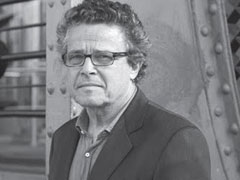Shared Spaces converses with Josep Llinas, president of the jury of the seventh edition of the European Prize for Urban Public Space.
Shared Spaces has spoken with Josep Llinàs about his conception of public space, the fruit of direct experience which is tested over and over again in his everyday practice as an architect. Perhaps owing his empirical way of approaching urban reality, he prefers to tackle the notion of public space from a tangent, from the fringes, and not starting from the centre. Llinàs understands that urban public space is defined at the limits where it meets other domains, whether they are natural or domestic. The “line” separating these spheres “advances or withdraws”, is reinforced or interrupted by letting itself be crossed and by making possible “an exchange of activities that endow the idea of public space with greater meaning and interest”. Hence, even though they are often presented as being in opposition, “the public and private spheres are mutually enriched wherever they meet”, thanks to their permeability and “the reciprocal yielding that occurs between them”.
Llinàs illustrates this idea using as an example the Jaume Fuster Library, which was the result of a public competition. The rules gave the participants the option of locating the new building in the place they deemed most appropriate within the general bounds of the Lesseps square. This venue is chaotic, crossed by several fast lanes of traffic, and has an uneven topography and irregular perimeter. For Llinàs, the question was not so much one of looking for the best site for the new facility and understanding public space as “extra space”, as happens with what has been dubbed iconic architecture. On the contrary, the building had to be politely retiring ─in a civilised way─ to make room for the “best public space available”. The fact is that Barcelona, in its own particular fashion, lends itself to being worked upon in this inverse way, like a negative, excavating the “black constructed part to keep finding the white part, the public part of the city”.



